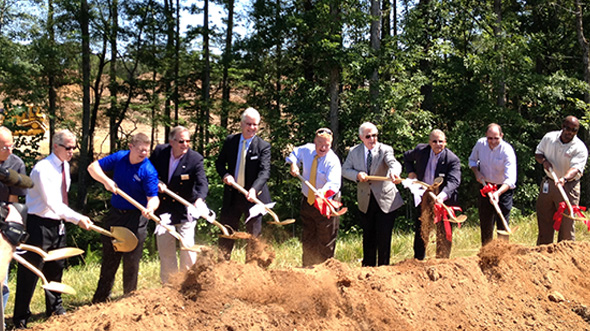
BLOG
—
Managing Surprises, Part 3: Setting the Stage for Success in Project Planning
Our experiences become our stories. Future events will remind us of our stories from time to time, for better or worse. As consultants, our projects become stories that we can carry around, share with others and draw lessons from for many years to come.
One of the “Aha!” moments in my career came when a seasoned engineering consultant named Skip was reviewing a draft report of mine. He made a remark along the lines of, “Remember, you’re telling a story,” and that forever changed the way I looked at written documents. Years from now, possibly in some far-off place, someone who is not familiar with a project that I worked on should be able to pick up one of my reports and get an accurate picture of what was done and why. The reader should not have to struggle to understand the most important information about the project, such as why it was undertaken, what information was gathered, what analyses were performed, what assumptions were made, where the decision points occurred and ultimately, what conclusions were reached and what is being done as a result. By helping me view my reports as “telling a story,” Skip made me a much more effective report writer, and probably improved our project outcomes in ways I’ll never know.
Every story has a beginning. A typical project report is, of course, a backward-looking document that lays out the story of the project to date. If we think of that story as viewed from the beginning, looking forward along the project timeline, we’re thinking about project planning—the process by which the plot line is created.
This analogy actually fits pretty well with the Project Management Institute’s definition of a project as “a temporary endeavor undertaken to create a unique product, service or result.” At the end of a successful project, the sum of our work products should tell a complete story. It may be a stand-alone story or part of a series, but each project exists only during a defined period of execution and has a pre-defined set of outcomes that constitute successful completion, whether it’s a product delivered, a service rendered or a result obtained.
Great projects begin with clear communication, typically in the form of an initial client-consultant conversation. In the language of the PMI, this point in the project life cycle corresponds to “project initiation,” also commonly called “project inception.” Whatever we choose to call it, the keys to success at this formative stage of the project are gaining an accurate understanding of project context, identifying key stakeholders and establishing agreement about the outcomes that will constitute satisfactory completion of the project.
This initial client-consultant conversation will be one of the most important events that will take place during the project, and that’s why it is the focus of today’s blog.
By the time the initial conversation takes place between client and consultant, the project has already accumulated some history, potentially involving past events, data gathered, actions taken, decisions made and responsibilities assigned. During the conversation, we begin to identify the most important pieces of historical information, building our understanding of the project context and developing a working problem statement.
The initial conversation is a good time to ask open-ended questions, reflect on what we’re hearing from the client and follow up with some clarifying questions, for example, “What I’m hearing is …” “Are you saying …?” “OK, I understand the main priorities are …” “What studies have already been completed?” “What reports are available?” “Are there compliance issues or deadlines we need to be aware of?” “Are there others who should have input to the planning process?”
The point of this conversation is to set the stage for success in the various elements of project planning: scope, schedule, cost, resources, communication, risk, etc. Those planning processes will set the framework for the overall flow of the project story—what is going to be done, why, where, when and how, and what outcomes are envisioned. Often, the initial conversation will expose key unknowns that need to be addressed. Those unknowns may lead to early action items, or they may help to shape the problem statement.
When surprises do occur during project execution, it’s often because important information was overlooked, misunderstood or miscommunicated in the early stages of project planning, or because a key stakeholder was not identified during project initiation. Establishing a correct understanding of project context—organizational and historical—and defining an accurate problem statement before we attempt to define a path to completion will go a long way to guard against such surprises.
Only after we’ve correctly understood the project context, developed an appropriate problem statement, defined project goals and obtained buy-in from key stakeholders are we ready to begin the traditional planning processes that will be needed to move the project forward. It all begins with a high-value initial conversation in which we ask the right questions, listen with an open mind, confirm our understanding of project goals and reach agreement on next steps. Finally, it’s appropriate to document our key takeaways from the conversation, and to send a written summary to the client to confirm our understanding. There begins our project’s story.
Eventually, every project becomes a part of our personal stories, but of course it also becomes part of our organizational stories and, most importantly, our clients’ stories. Those stories will be remembered and shared for years to come. May they turn out to be the kinds of stories we all enjoy sharing.
Next up, Part 4: Communication.

Lee Smith
Leland (Lee) Smith, PE, PMP, D.WRE, is an engineer program director for Woolpert’s water market and is based in the firm’s Atlanta office, where he leads project teams in problem definition, analysis and solution delivery for water infrastructure and water resource projects.Lee aspires to an increasingly client-centered approach to consulting, to foster good working relationships and support high professional standards.


